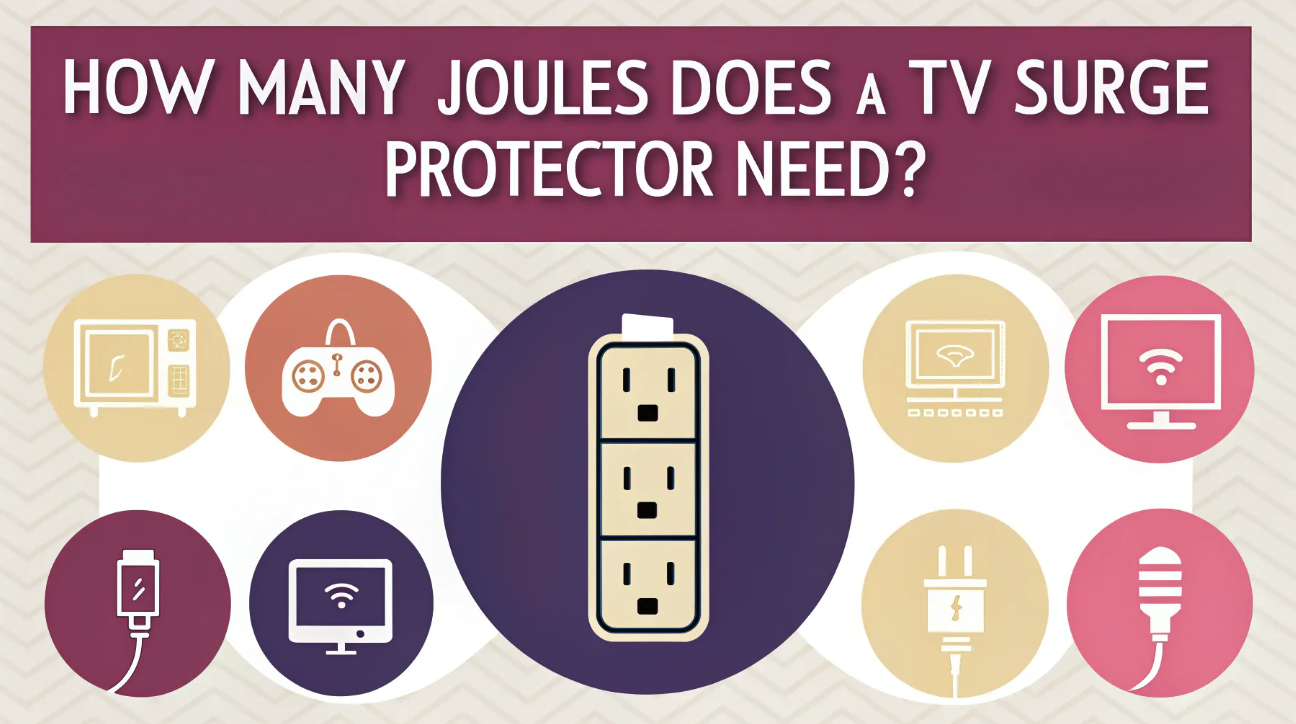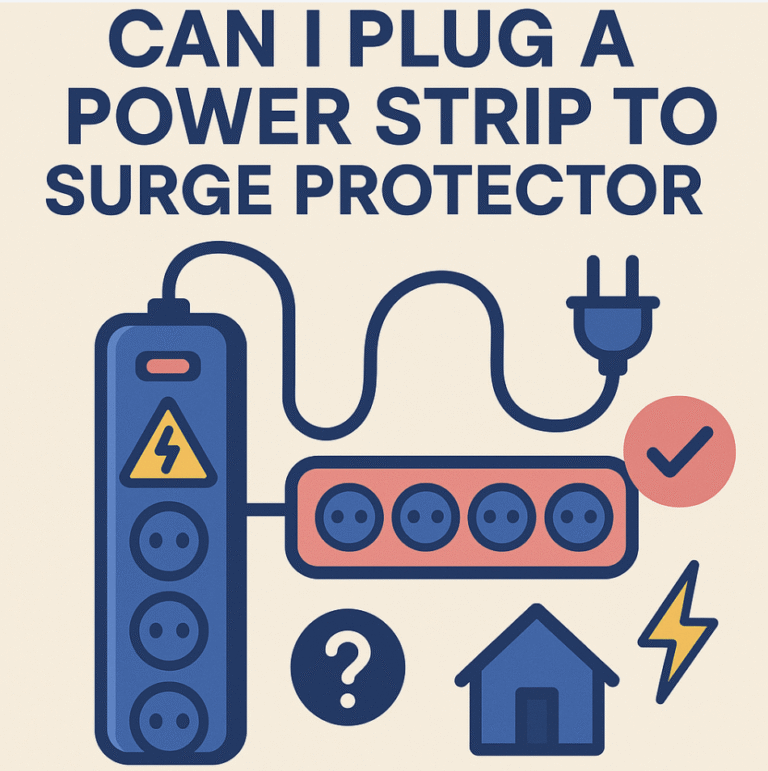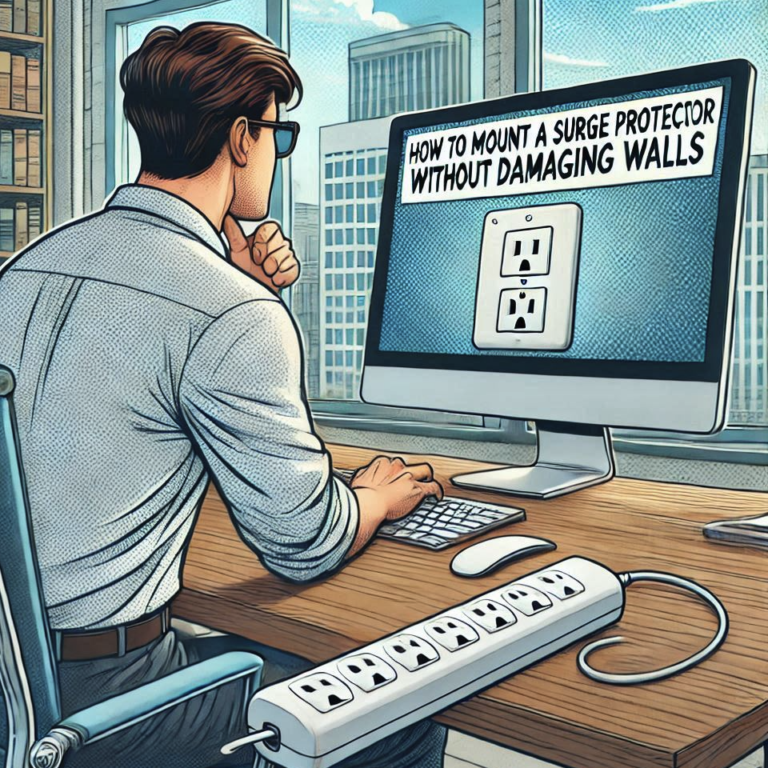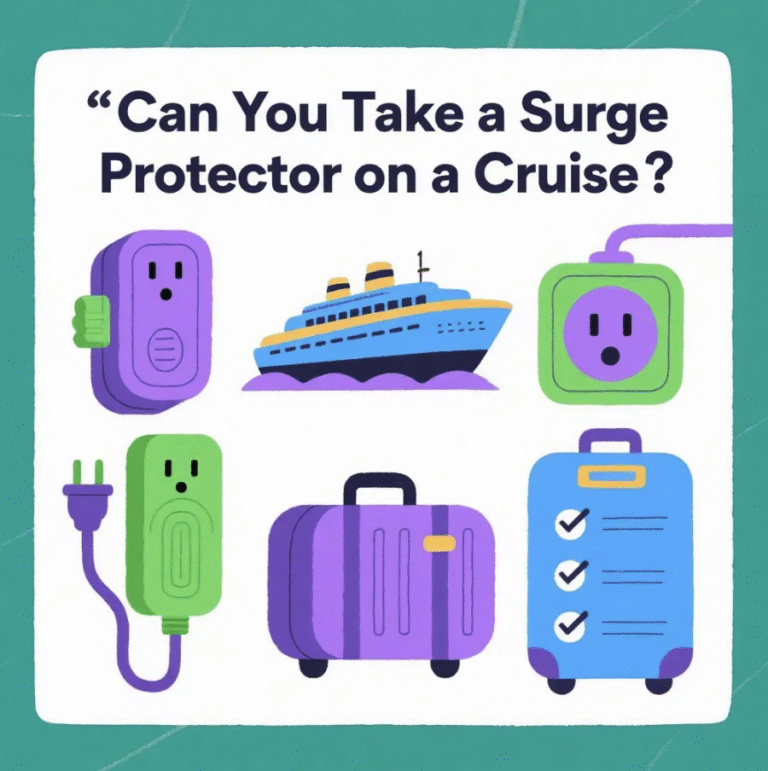How many Joules Do You Need for a TV Surge Protector?

When I think about how to protect my TV from unexpected power surges, the first thing that comes to mind is the surge protector’s joule rating. This rating indicates the maximum amount of joules the surge protector for my TV can absorb before it fails. For basic setups, a rating between 1,000 and 2,000 joules works well. If I have a high-end TV or multiple connected devices, I aim for 2,000 to 4,000 joules or more.
A higher joule rating means better protection, especially for expensive electronics. Choosing the right surge protector ensures my TV stays safe during sudden voltage spikes.
What Are Joules in Surge Protectors?
When I first learned about surge protectors, I realized that joules are crucial in determining their effectiveness. Joules measure how much energy a surge protector can absorb before failing. This energy absorption capacity directly affects how well the device can protect my electronics from power surges. Understanding this helped me make smarter choices when selecting the right surge protector for my TV.
Understanding Surge Protector Joules
Joules represent the energy a surge protector can handle during a voltage spike. For example, a surge protector with a 1,000-joule rating can absorb up to 1,000 joules of excess energy before it stops working. This rating acts as a “bank” of protection. Each power surge withdraws some energy from this bank, reducing the protector’s capacity over time. A higher joule rating means a larger bank, which lasts longer and provides better protection.
I learned that surge protectors come with ratings ranging from a few hundred to several thousand joules. Devices with higher ratings provide more robust protection, especially for sensitive electronics such as TVs. This knowledge made me realize that investing in a surge protector with a higher joule rating is essential for safeguarding expensive devices.
How Joules Protects Your TV and Electronics
Power surges can occur for various reasons, such as lightning strikes or fluctuations in the electrical grid. These surges send a sudden burst of energy through the wiring, which can damage or destroy connected devices.
A surge protector acts as a barrier, absorbing this excess energy and preventing it from reaching my TV or other electronics.
The joule rating determines how much energy the surge protector can absorb before it fails.
For instance, if a surge protector has a 2,000-joule rating, it can handle multiple small surges or one large surge up to that limit. Once the joule capacity is depleted, the surge protector loses its ability to protect and needs replacement. This is why I always check the joule rating when buying a new surge protector for my TV.
Why Joule Ratings Matter for Surge Protectors
The joule rating is one of the most critical factors in choosing a surge protector. It directly affects the level of protection provided to my devices. A higher joule rating means the surge protector can handle larger or more frequent surges, offering better long-term protection. For basic setups, a rating of 1,000 to 2,000 joules is sufficient. However, for high-end TVs or setups with multiple devices, I prefer surge protectors with ratings of 2,000 joules or more.
I also discovered that the joule rating acts as an indicator of the surge protector’s lifespan. Each surge reduces the available joules, so a higher rating ensures the device lasts longer. This is especially important in areas prone to frequent power surges. Choosing a surge protector with an appropriate joule rating gives me peace of mind, knowing my TV and electronics are safe from unexpected voltage spikes.
How Many Joules for Surge Protector: Recommended Ratings for TVs
When I choose a surge protector for my TV, I always consider the joule rating. It determines how much energy the device can absorb during power surges. Different setups require different levels of protection. Understanding these needs helps me make the right choice.
I’ve noticed that this range is ideal for protecting smaller electronics like printers, routers, or basic laptops. It offers a balance between affordability and functionality. If I don’t have high-value equipment, I stick to this range to ensure my devices remain safe without overspending.
High-End TVs and Home Theater Systems (2,000+ Joules)
When I invest in a high-end TV or a home theater system, I always look for surge protectors with a higher joule rating. A surge protector with a rating of 2,000 joules or more provides the level of protection these expensive devices need. High-end TVs, especially HDTVs, are sensitive to voltage spikes.
A higher joule rating ensures they stay safe during unexpected surges.
Home theater systems often include multiple components, such as amplifiers, subwoofers, and advanced sound systems. These setups demand robust protection. I’ve learned that surge protectors with a high rating not only shield my devices but also extend their lifespan by absorbing larger energy spikes.
Multi-Device Setups: TVs with Consoles, Sound Systems, and More
For setups with multiple devices, I always opt for surge protectors with ratings above 2,000 joules. These setups often include a TV, gaming consoles, sound systems, and other connected electronics. Each additional device increases the risk of damage during a power surge.
A higher joule rating ensures all connected devices receive adequate protection.
I’ve found that surge protectors designed for multi-device setups often come with additional features, such as multiple outlets, USB ports, and indicator lights. These features make it easier to manage and monitor my devices.
Choosing a surge protector with a high rating gives me peace of mind, knowing my entire setup is safe from sudden voltage spikes.
Factors to Consider When Choosing a TV Surge Protector
When I select a surge protector for my TV, I always evaluate several key factors. These considerations help me ensure that my devices receive the best possible protection against power surges. Each factor plays a role in determining the appropriate joule rating and features I need.
TV Size and Value
The size and value of my TV significantly influence the type of surge protector I choose. Larger TVs or high-end models often come with advanced technology and higher price tags. These devices are more sensitive to voltage spikes, so they require robust surge protection. I always opt for a surge protector with a higher joule rating when dealing with expensive or large TVs. This ensures that the device can handle larger energy surges and provide long-term protection.
For smaller or less expensive TVs, a surge protector with a joule rating between 1,000 and 2,000 joules usually suffices. However, I never compromise on quality, even for basic setups. Protecting my investment, regardless of its cost, remains a priority.
Number of Connected Devices
The number of devices I plan to connect to the surge protector also affects my decision. A single TV setup requires less protection compared to a multi-device arrangement. When I connect additional electronics, such as gaming consoles, sound systems, or streaming devices, I always choose a surge protector with a higher joule rating. This ensures that all connected devices receive adequate protection during a power surge.
I also look for surge protectors with multiple outlets and USB ports. These features make it easier to manage my devices while ensuring they remain safe. For setups with numerous devices, I prioritize surge protectors explicitly designed for multi-device use.
Frequency of Power Surges in Your Area
The frequency of power surges in my area is another critical factor. In regions prone to frequent voltage spikes, I always invest in a surge protector with a higher joule rating. This provides better protection and extends the device’s lifespan. I’ve learned that each power surge reduces the available joules in a surge protector. A higher joule rating ensures the device lasts longer, even in areas with unstable electrical grids.
For areas with minimal power surges, a standard surge protector with a moderate joule rating may suffice. However, I still prefer to err on the side of caution. Unexpected power surges can happen anywhere, and having reliable surge protection gives me peace of mind.
Additional Features: USB Ports, Indicator Lights, and Warranties
When I choose surge protectors, I always look for additional features that enhance convenience and functionality. These features not only make the device more user-friendly but also provide extra layers of protection and utility for my electronics.
USB Ports for Modern Devices
USB ports have become essential in surge protectors. Many of my devices, like smartphones, tablets, and smartwatches, rely on USB charging. A surge protector with USB ports eliminates the need for separate adapters, reducing clutter around my setup.
It also ensures that these devices receive the same level of surge protection as my TV and other electronics. I find this feature particularly useful when I have limited wall outlets or need to charge multiple devices simultaneously.
Indicator Lights for Monitoring Protection
Indicator lights on surge protectors give me peace of mind. These lights show whether the device is functioning correctly and providing active surge protection. If the light goes off, I know the surge protector has reached its joule capacity and needs to be replaced. This feature helps me avoid the risk of unknowingly using a surge protector that no longer offers protection.
I always check for clear and easy-to-read indicator lights when selecting a surge protector.
Warranties for Added Assurance
Warranties are another critical feature I consider. Many high-quality surge protectors come with warranties that cover connected devices in case of failure. This gives me confidence that my electronics are protected, even in extreme situations.
I’ve noticed that surge protectors with higher joule ratings often include better warranty coverage. This reassures me that the manufacturer stands behind their product’s performance.
Combining Features for Maximum Value
I always aim to find surge protectors that combine these features. A surge protector with a rating of 2,000 joules or more, USB ports, indicator lights, and a solid warranty offers the best value for my investment. These features ensure my devices remain safe, functional, and easy to manage.
When evaluating surge protectors, I prioritize those that meet my needs while offering these additional benefits.
Practical Tips for Choosing the Right Surge Protector
When I select a surge protector, I focus on key factors that ensure my devices receive the best protection. These practical tips help me make informed decisions and avoid common mistakes.
Look for UL Certification and Safety Standards
I always check for UL (Underwriters Laboratories) certification when choosing a surge protector. This certification guarantees that the product meets strict safety standards. It reassures me that the device has undergone rigorous testing to effectively handle power surges.
Without this certification, I cannot trust the surge protector to perform reliably in the event of voltage spikes.
Some surge protectors also include additional safety features, such as auto-shutoff capabilities. For example, the TrickleStar TS1205 Surge Protector comes with an auto-shutoff function and indicator lights for surge protection and grounding. These features enhance safety by ensuring the device stops working once its joule capacity is depleted. I find these indicators helpful because they let me know when it’s time to replace the surge protector.
Match the Joule Rating to Your TV and Setup
Understanding how many joules a surge protector for TV setups needs is crucial. I always match the joule rating to the type of TV and the number of connected devices. For basic TVs, I choose surge protectors with ratings between 1,000 and 2,000 joules. These provide sufficient protection against common power surges. For high-end TVs or multi-device setups, I prefer a higher joule rating of 2,000 or more. This ensures robust protection for expensive electronics.
For instance, the Monoprice 12 Outlet Power Surge Protector offers a 4,000-joule rating, making it ideal for home theater systems or setups with multiple devices. It also includes 12 outlets and USB ports, which accommodate all my electronics in one place.
Consider Surge Protectors with Warranties and Extra Features
Warranties give me peace of mind when purchasing surge protectors. Many high-quality options come with warranties that cover connected devices in case of failure. For example, the Surge Protectors from Belkin and Tripp Lite include a limited lifetime warranty and equipment protection of up to $75,000. This level of assurance gives me confidence in the product’s reliability.
Additional features, such as USB ports and indicator lights, add convenience and functionality. Most surge protectors do come with USB ports and LED lights that indicate active surge protection. These features make it easier to manage my devices while ensuring they remain safe.
I also appreciate surge protectors with multiple outlets, such as the Industrial Surge Protectors, which can have up to 24 outlets. These are perfect for setups with numerous devices.
When I evaluate surge protectors, I prioritize those that combine high joule ratings, warranties, and useful features. This approach ensures my electronics receive the best protection while adding value to my purchase.
I always prioritize protecting my TV and other sensitive electronics with the right surge protectors. A joule rating between 1,000 and 2,000 joules is suitable for most TVs, but I prefer higher ratings for expensive setups or multiple devices.
I consider factors such as the size of my TV, the number of connected devices, and the frequency of power surges in my area. Regularly replacing surge protectors ensures continued safety. Investing in a high-quality surge protector is a smart decision that safeguards my electronics and gives me peace of mind.






